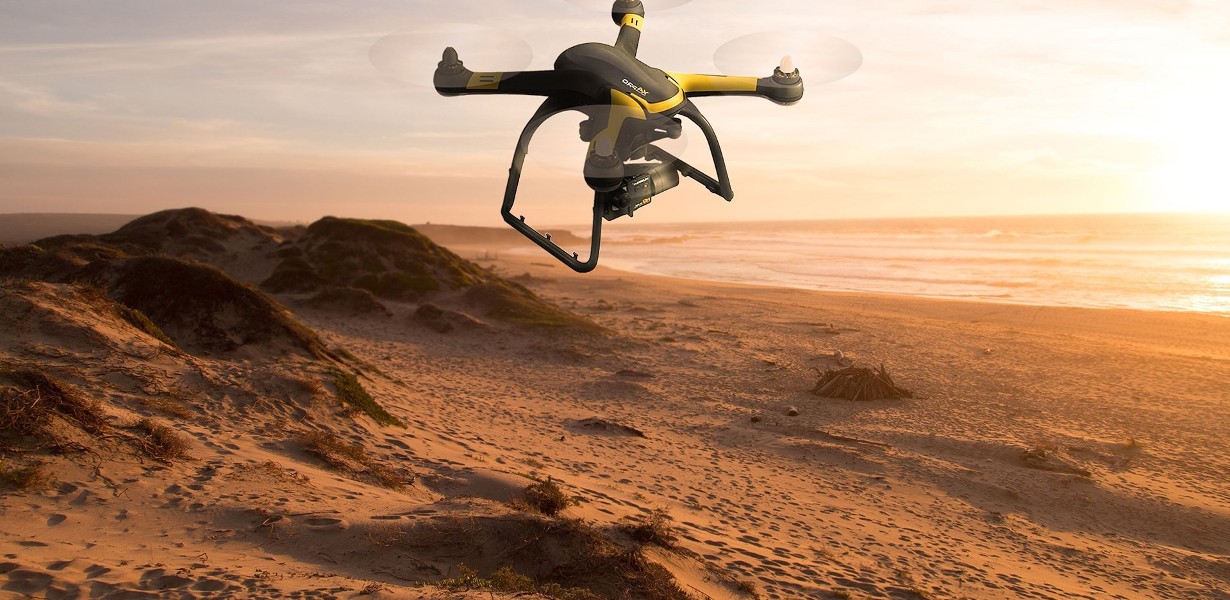
In the realm of desert exploration, a fascinating revolution is unfolding. Unmanned Aerial Vehicles (UAVs), commonly known as drones, have emerged as powerful tools reshaping how we explore and study the world’s arid landscapes. These cutting-edge technological marvels are enhancing our understanding of deserts, unlocking unprecedented insights, and addressing unique challenges. In this comprehensive guide, we delve into the transformative impact of drones on desert exploration, revealing how these remarkable machines are changing the game.
Unraveling the Desert Mystique with UAVs
Deserts have long held a certain allure, evoking images of endless dunes, harsh environments, and untamed beauty. Yet, they remain enigmatic, concealing secrets and natural wonders. UAVs are becoming our trusted allies in uncovering these secrets. These robotic aerial companions navigate the vast expanses of deserts with ease, providing researchers and enthusiasts with a bird’s-eye view of these seemingly barren landscapes.
The Evolution of Desert Exploration
Traditionally, desert exploration was fraught with challenges, from extreme temperatures to rugged terrain. Researchers had to rely on traditional methods that often took a toll on their safety and efficiency. However, the advent of drones has transformed this scenario. UAVs offer an innovative solution to explore deserts without subjecting humans to the perils of the harsh environment.
Mapping the Uncharted
One of the most significant contributions of drones to desert exploration is their ability to create highly detailed maps. Equipped with advanced imaging technology, these UAVs can capture intricate aerial imagery, enabling researchers to map the terrain with unprecedented precision. This level of detail is invaluable for various scientific studies, conservation efforts, and even adventure planning.
Environmental Monitoring and Conservation
Desert ecosystems are fragile, and maintaining a delicate balance is crucial. Drones equipped with sensors can monitor environmental changes and provide data for conservation efforts. They are instrumental in tracking wildlife, assessing vegetation health, and identifying areas vulnerable to desertification. This data helps scientists and conservationists make informed decisions.
Archaeological Discoveries
Drones are not only changing the way we explore modern deserts but also offering new perspectives on historical civilizations. Archaeologists are increasingly using UAVs to identify and document ancient settlements and geoglyphs that are often hidden beneath the desert’s surface. These discoveries shed light on human history and the mysteries of long-lost cultures.
Searching for Water Sources
Water is the lifeblood of any desert. UAVs equipped with specialized equipment can detect underground water sources, making them invaluable tools for water resource management in arid regions. This technology can help in securing water for local communities and wildlife.
Geophysical Exploration
Drones are used for geophysical surveys, assisting in the exploration of natural resources like minerals and fossil fuels in desert areas. Their ability to cover vast areas efficiently and collect essential geological data is indispensable for resource exploration.
The Challenges and Limitations
While drones have opened up exciting possibilities for desert exploration, they are not without challenges and limitations. Factors such as battery life, weather conditions, and the remote locations of deserts can pose obstacles to their usage.
Preparing for Desert Drone Expeditions
Planning a drone expedition in the desert requires meticulous preparation. From choosing the right UAV model to understanding the local regulations, there are several factors to consider before embarking on your desert adventure.
Final Words
In the vast and mysterious landscapes of deserts, drones have emerged as the heroes of exploration. They are breaking new ground, providing us with insights that were once impossible to obtain. These UAVs are not just machines; they are our eyes in the sky, unraveling the secrets of the desert with precision and grace.
Commonly Asked Questions
1. Are there any restrictions on flying drones in desert areas?
Yes, there are often regulations in place for flying drones in desert regions, primarily related to safety, airspace, and environmental concerns. It’s essential to research and adhere to these regulations before taking your drone to the desert.
2. What types of drones are suitable for desert exploration?
Drones with robust construction, long battery life, and advanced imaging capabilities are ideal for desert exploration. Models designed for rugged environments and equipped with GPS technology are recommended.
3. How can drones assist in desert conservation efforts?
Drones play a crucial role in monitoring desert ecosystems, tracking wildlife, and assessing vegetation health. This data is instrumental in conservation efforts and the protection of fragile desert environments.
4. What are the advantages of using drones for archaeological research in deserts?
Drones provide a unique aerial perspective that helps archaeologists identify and document ancient structures and artifacts in deserts. They offer efficiency and accuracy, making them valuable tools for archaeological research.
5. What future developments can we expect in desert exploration with drones?
The future of desert exploration with drones holds exciting possibilities, including improved battery technology, more advanced sensors, and increased automation. These advancements will enhance our ability to explore and understand desert landscapes.




